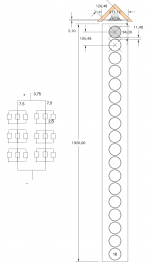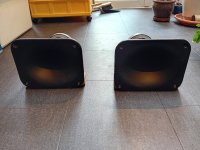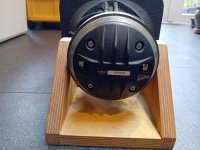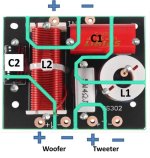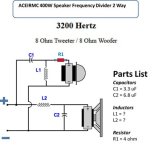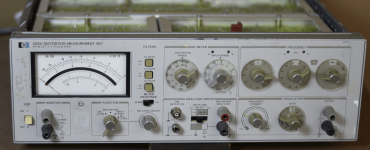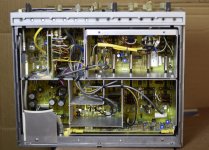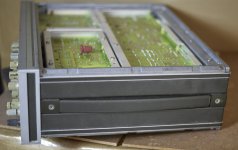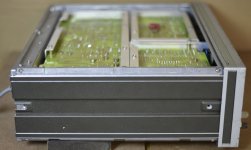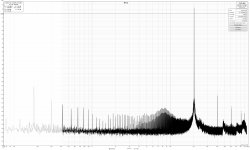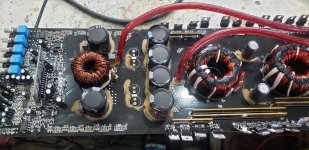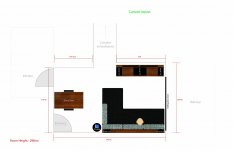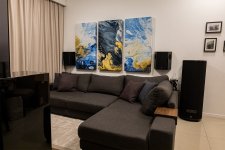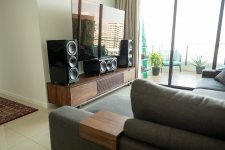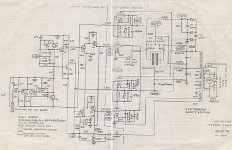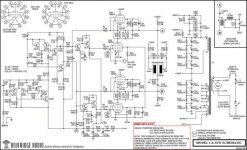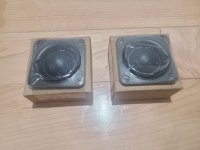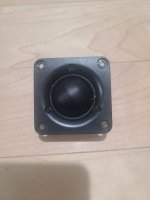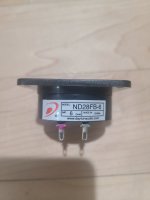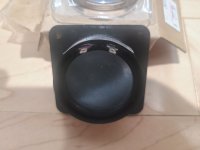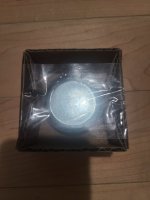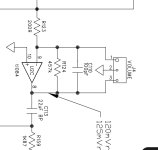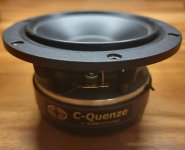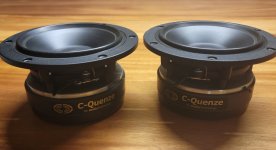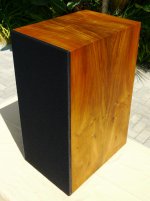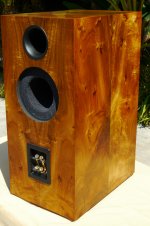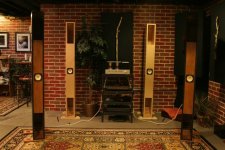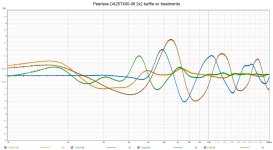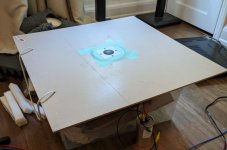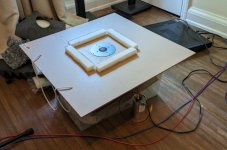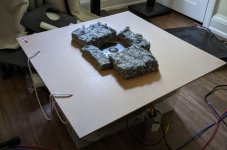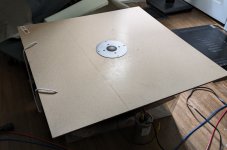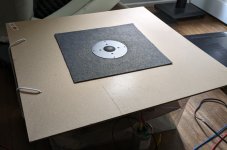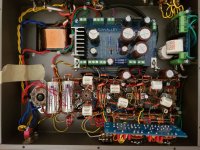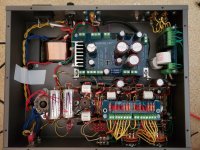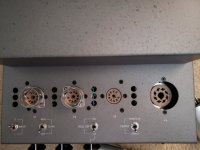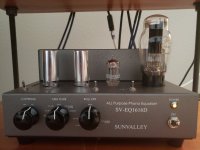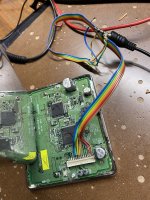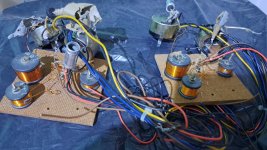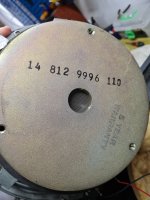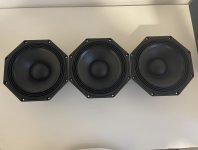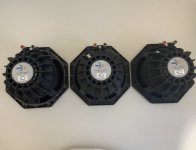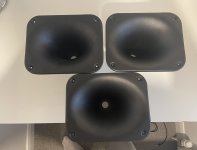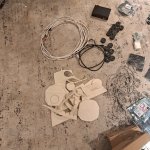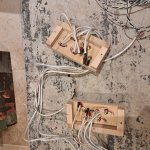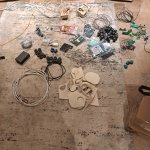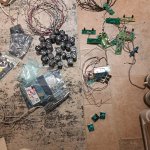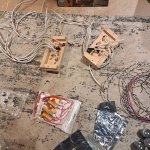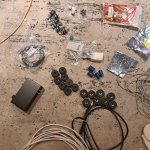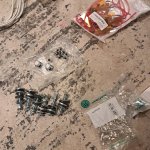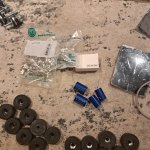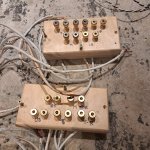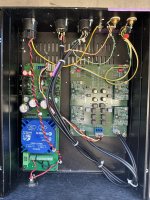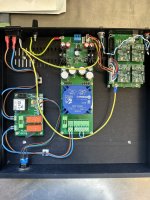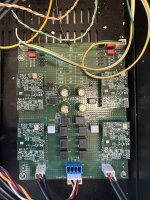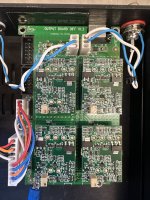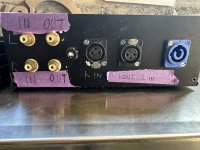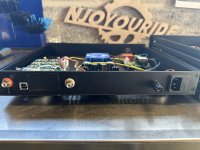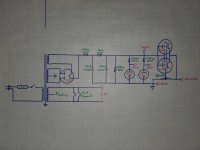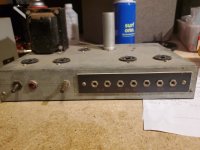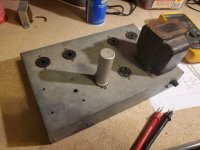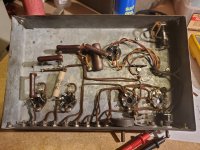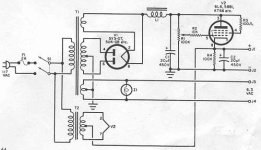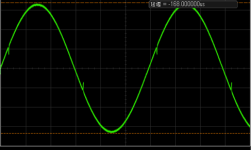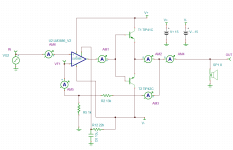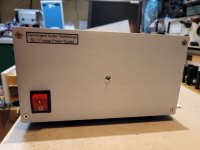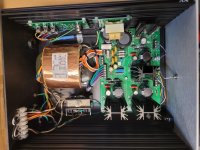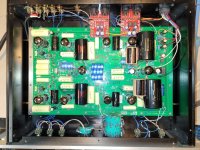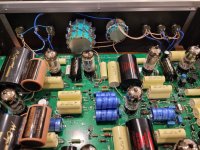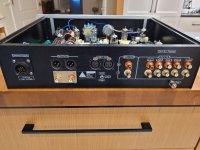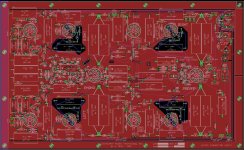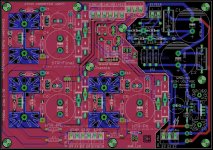Being working on this project for the last two years. Here the final result, working perfectly.
This project started when one of my friend brought me a defective SL1 (original), he said: <nothing serious, just a little noise at the output, probably a noisy tube...>, one month later it was fixed, nothing serious, yeah right... When I started to work on the unit at first I was completly lost, it was a very complex preamp, with a lot of SS parts near the tubes, very complex HV regulator section, and external power supply. I rapidly realized that the supply was defective, and that probably some other parts, these small TO92 SS parts were gone as well. I had no schematics, they were impossible to get, I was left in the dark.
I said to my friend I can try to fix it, but it will be expensive, and will take me a long time (doing repair part time, was still working at the time). First I needed to repair the HV section, all the heaters supplies seems ok. I started to trace the HF regs section schematic, it was a mess, even worst, some part of it was inside the external supply. I worked, and worked, and finally got something that make sense. I isolated this section, and found all the defective parts, replaced them, and got a working HV regs. Then using an external lab power supply (current limited), and by isolating each tubes section, found the shorted/open SS parts driving the tubes (then are small MOSFET), and replaced all the defective ones, tracing the schematic while I go.
While doing the schematics, it was difficult to trace the PCB, and to see where all the traces were going, so to help me I started making a PCB, to help tracing, and figuring the schematics. When I was done I had a pretty close PCB, probably with some errors, but enough to complete my schematics and the repair.
We listend to the repaired unit and we found it was one of the best preamp we ever listened to, period. And the phono section is just gourgeous. A real reference preamp...
A few years later an other friend ask me for a recommadation for his system (he has a Pass XA30.8 as amp). He was looking for a good preamp, and a phono preamp. I told him that the CAT SL1 was doing all that, in one package. I bought a used unit from Alberta, but guess what it was intermittent. I had to repaired this one two. It has a few problem, intermittent tube sockets, and a few cold junction soldering. Repalced all the sockets, and redo the solder joint and it was ok. This unit was slightly newer than the the first one I repaired, version MKII. I used my previous info for the repair, fine tuned my schematics and PCB layout, and did the few new changes.
Then finally I had to repair a third one, this one had a severe problem. The power supply main transformer has the HV secondary burned, litterally detroyed, and the rest of the HV section gone naturally. One very bad short coming of this preamp supply is this, the main fuse will let go if one of the high current heater supply short, but won't blow if it is only the much smaller current HV section. The HV really needs its separate low rating fuse.
I was pretty close the first time, and I was confident I had the real thing. During COVID I had spare time and decided to make myself a CAT SL1, my own version. To improve on the thing I don't like about the originals I worked on I decided to make these changes:
-Better made external power supply, with larger enclosure, proper layout, bigger regulator heatsinks, CRC filtering and better caps on the HV section, Separate fuses on all the outputs (Heaters and HV), and since I want SE/BAL converters in the preamp, extra +/-24V supply for these converters.
-I hate the original cable between the supply and preamp. It can't be disconnected, it is large gauge, not very good quality ( at least on the ones I saw), make working on the preamp difficult, etc... So I want a flexible cable, with detachable connector at the preamp. I know, it may not sound as good as the fixed one, but no way I'll have a captive cable on my preamp...
-Added a ground breaker to the supply, my own version of the Ayre noise filter and Furutech IEC AC inlet connector.
-The original used the excellent, and now gone REL-Caps everywhere (the new one have custom made caps). I cannot get REL-Caps, so used more mondain IC film caps for the supply, and Mundorf caps for coupling. For the output I went over the board with Mundorf Supreme Silver/Gold/Oil caps, bypassed with Duelund copper foil.
-The original has the excellent ROE resista resistors. One of my friend was able to give my most of the values I needed. Used a mix of Tantalum and Shinkoh and Kiwame resistors for the rest.
-The original used for volume an Electroswitch 24 steps attenuator with ROE descrete resistors. Again impossible to get, found a 4 decks one on ebay. Mounted all the ROE resistors, ans it tested fine.
-The Balance used a smart way of doing the balance without impacting on the channel crosstalk. It adds resistors on the lowering channel, in fact increasing these channel volume total value, decreasing the actual volume, while the other channel don't move, clever. Again it is using an Electroswitch rotary switch, got this one at Mouser...
-I made a few years back small SE/BAL and BAL/SE converter PCB, using the mostly transparent DRV134 and INA2134 chips. I installed them inside the preamp. The SE/BAL input converter is only on the CH1 input, with a switch to select between RCA and XLR. The SE/BAL output converter is at the output. Since this preamp can produce HUGE output level, I installed +/-12V protection zener at the input, in fact limiting the preamp to +/-12Vpk-pk output. If the preamp is so good I may install Lundhall balanced output down the road...
-The MK2 version I saw use Cardas hook-up wiring, I used the same.
So, here my preamp, after all this work I'm very happy with the result, no noise, phono section has a perfect RIAA curve after some tuning, same gain on both channels with the tubes I used, very stable HV supply with no noise. Yes I used a clone enclosure from China but I remade completly the rear panel, and trashed the included cheap toggle switches, bought good quality C&K ones.
Here a few measurements:
Preamp Section gain: 25.5dB, BW 836Khz, Vout max 50Vac (limited now by the SE/BAL converter inout zener at +-12Vpk-pk), THD: 0.01%, noise <1.2mvac, Zout around 500 ohms.
Phono section gain: 45dB with external load connector. Huge overload threshold. My friend use it with a Denon DL103 without problem...
